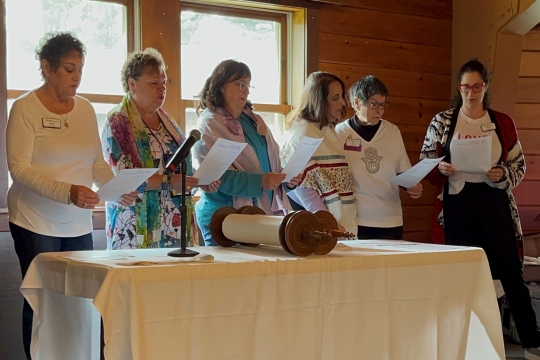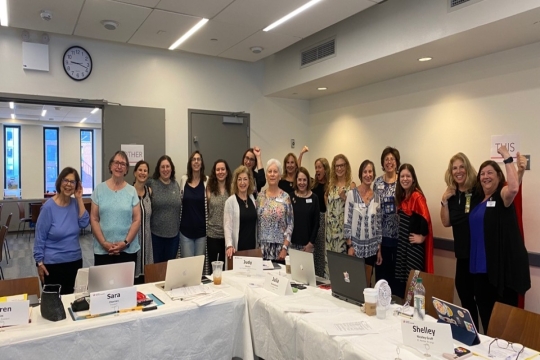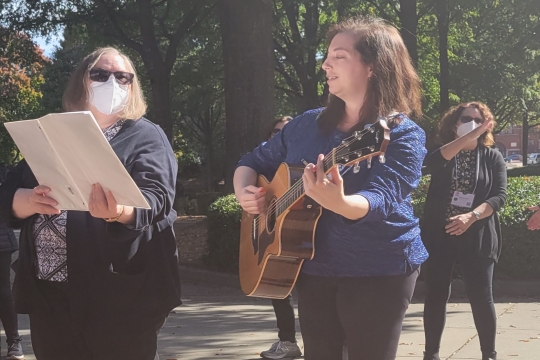
Several weeks ago, I was asked to speak about sisterhood at a brunch for new and potential members of my congregation. The woman who was the brunch organizer, a well-established member of the congregation, introduced me as the first person that she had met when she came to Friday night services, years ago, to “check out” the congregation. She spoke for a minute or so about how I wouldn’t allow her to sit alone in the back, how I had invited her to sit with us, and how, after the service, I had taken her around and introduced her to several members of the congregation. I had quite forgotten that evening, but apparently, she had not.
This week’s parashah, Tazria, focuses on the determination of purity and impurity as the result of giving birth or as the result of “leprosy” on an individual or a piece of cloth. Rather than focusing on the medical situations involved, I am focusing on the impact of the determination on the individual, that is the physical isolation that results when an individual is found to be impure. The individual is kept away from the community, perhaps outside the community, presumably for the long-term health of the community. The individual is isolated, not permitted to rejoin the community until the priest, an established leader within the community, reaches out, examines, approves, and brings the individual back to rejoin family and friends.
In our congregations and sisterhoods, we sometimes see individuals at events who appear isolated even in the middle of the crowd. People have many reasons for the isolation. Perhaps the individual is new to the situation, similar to my friend above. Perhaps the individual is facing a personal challenge or illness or has recently experienced a loss through a death or some other life crisis. Perhaps the individual is dealing with children and is overwhelmed. Many of us have experienced one or more moments of such isolation and understand the feeling of invisibility.
While a few people attend programs or services for the content only and are not seeking a personal connection, I have heard stories of individuals who have attended, sometimes several times, quietly seeking a connection but not finding it. The result may be that the individual leaves the event, our sisterhood, or congregation unfulfilled, perhaps not to return.
So, who are the established leaders of the community who might have reached out, listened to, and brought the individual into the community? Is this role limited to the clergy, the modern-day priest in the community, and to the official congregational leadership? At varying times, each and every one of us may play the role of the established leader. We have the chance to influence whether or not members of our sisterhoods feel like they are understood and included, or they don’t. A kind word, a welcoming smile, and a listening ear can go a long way.
Thinking back to the time when I welcomed the new member at services, I had no idea that my actions would be remembered so many years later. Perhaps they played a role in her decision to join, to become involved, and ultimately to become a leader in the congregation (membership co-chair, no less!). When I drew her into the community, I didn’t know about the future impact. Since interactions have the potential for sacred impact, I hope that I, that we, continue to draw potential members, and perhaps future leaders, from isolation into our communities.
HarrietAnn Litwin is a past member of the WRJ Board and a current member of the Chai Society where she serves on the Communications Task Force. She is an Area Director in the Mid-Atlantic District. HarrietAnn is a member of Congregation Beth Emeth in Wilmington, Delaware and is currently a co-president of her sisterhood.
Related Posts

Parashat Yom Rishon shel Rosh HaShanah

Cultivating a Culture of Accountability and Belonging


